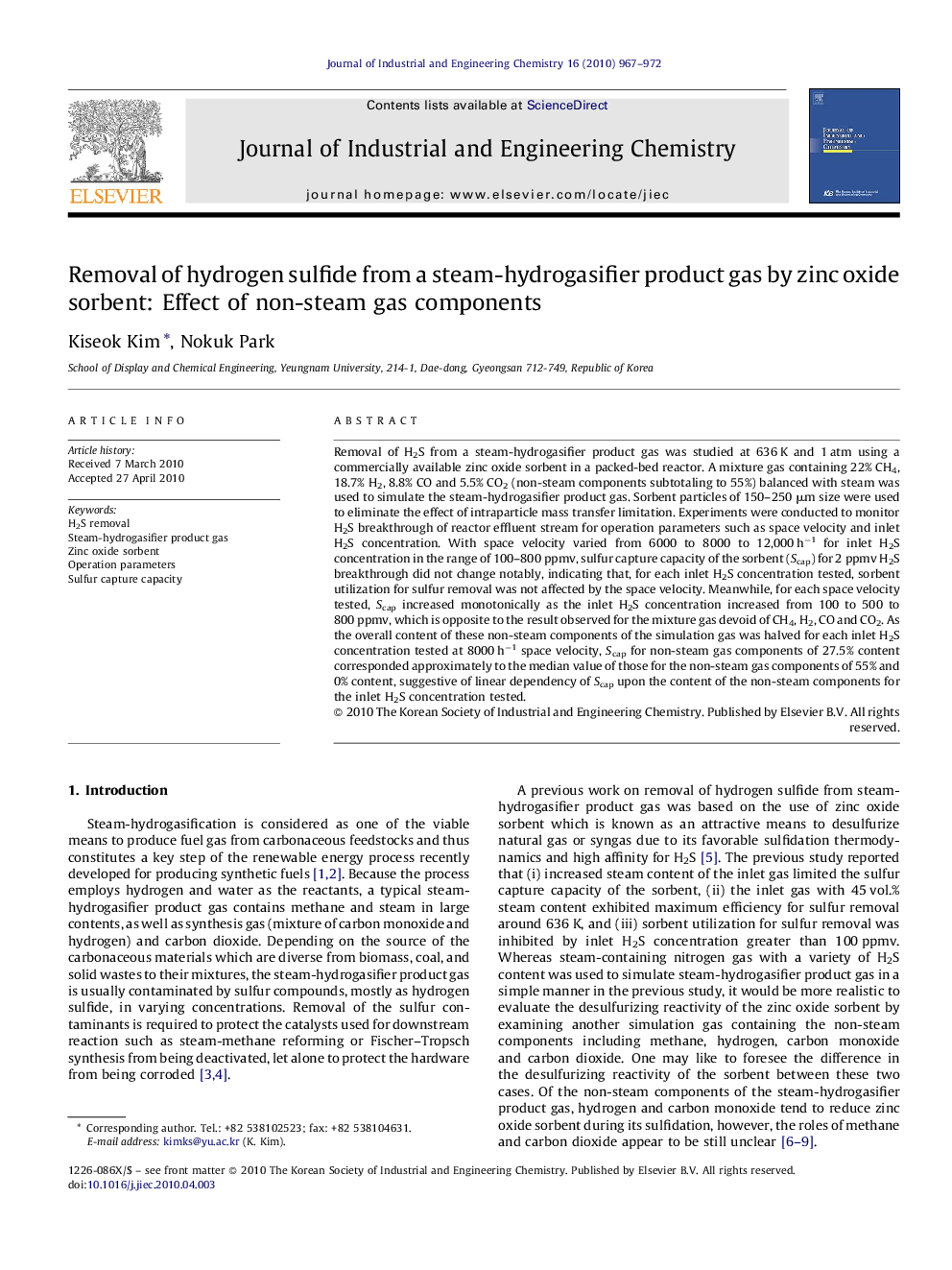| Article ID | Journal | Published Year | Pages | File Type |
|---|---|---|---|---|
| 229190 | Journal of Industrial and Engineering Chemistry | 2010 | 6 Pages |
Removal of H2S from a steam-hydrogasifier product gas was studied at 636 K and 1 atm using a commercially available zinc oxide sorbent in a packed-bed reactor. A mixture gas containing 22% CH4, 18.7% H2, 8.8% CO and 5.5% CO2 (non-steam components subtotaling to 55%) balanced with steam was used to simulate the steam-hydrogasifier product gas. Sorbent particles of 150–250 μm size were used to eliminate the effect of intraparticle mass transfer limitation. Experiments were conducted to monitor H2S breakthrough of reactor effluent stream for operation parameters such as space velocity and inlet H2S concentration. With space velocity varied from 6000 to 8000 to 12,000 h−1 for inlet H2S concentration in the range of 100–800 ppmv, sulfur capture capacity of the sorbent (Scap) for 2 ppmv H2S breakthrough did not change notably, indicating that, for each inlet H2S concentration tested, sorbent utilization for sulfur removal was not affected by the space velocity. Meanwhile, for each space velocity tested, Scap increased monotonically as the inlet H2S concentration increased from 100 to 500 to 800 ppmv, which is opposite to the result observed for the mixture gas devoid of CH4, H2, CO and CO2. As the overall content of these non-steam components of the simulation gas was halved for each inlet H2S concentration tested at 8000 h−1 space velocity, Scap for non-steam gas components of 27.5% content corresponded approximately to the median value of those for the non-steam gas components of 55% and 0% content, suggestive of linear dependency of Scap upon the content of the non-steam components for the inlet H2S concentration tested.
